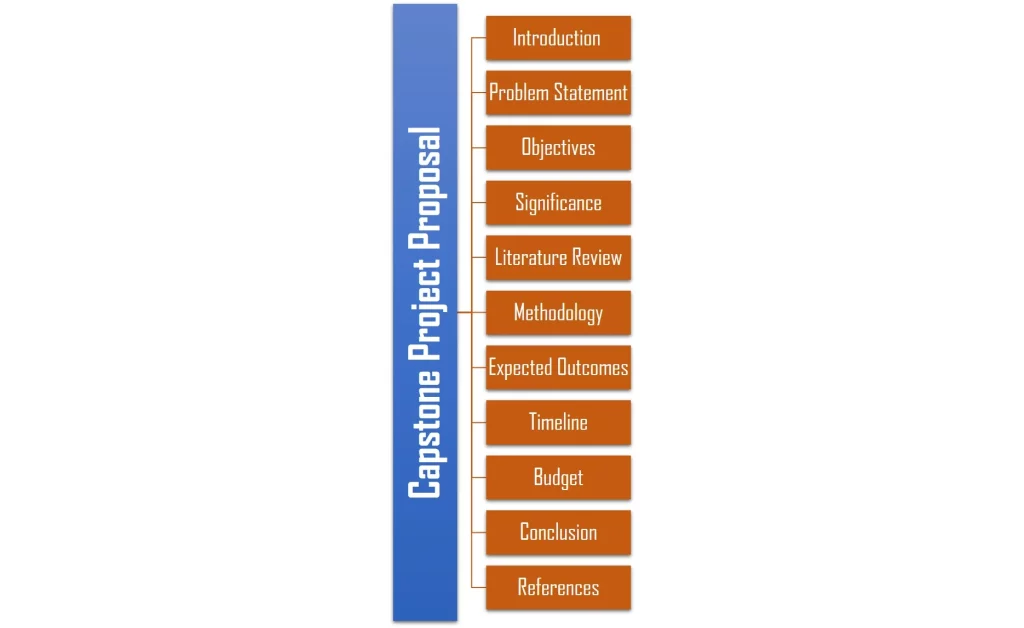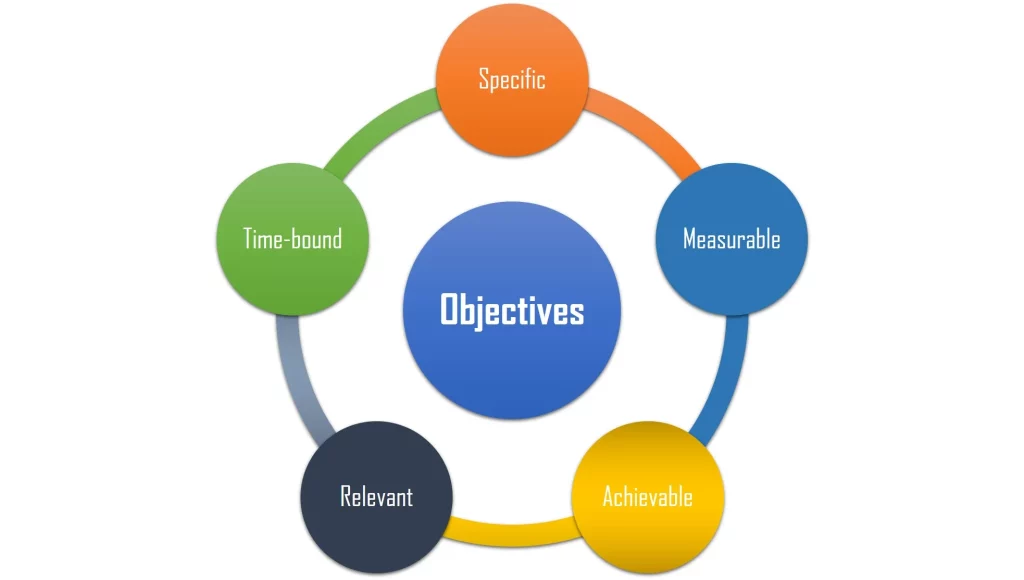
A capstone project proposal is a formal document that outlines the plan for a capstone project. It serves as a roadmap for the research or applied project, providing a clear overview of what the project aims to achieve, how it will be executed, and why it is significant. It is a critical initial step in the capstone project process, as it helps to ensure that the project is feasible, relevant, and aligns with the requirements of the academic program.
Here is a sample capstone project proposal for students:
Key Components & Format
- Title: A concise and descriptive title that reflects the main focus of the project.
- Introduction:
- Problem Statement: Clearly articulates the specific issue or question the project aims to address.
- Objectives: Clearly defined and measurable goals that the project aims to achieve.
- Scope of Work:
- Significance and Justification:
- Literature Review:
- Methodology:
- Expected Outcomes:
- Feasibility: Demonstration that the project is realistic and achievable within the given time frame and resources.
- Timeline:
- Resources:
- Budget (if applicable):
- Conclusion:
- References:
A well-crafted capstone project proposal is crucial for obtaining approval from academic advisors and ensuring a clear and structured path for the successful completion of the capstone project.
Capstone Project Proposal Writing Tips
- Understand the Assignment Guidelines: Familiarize yourself with the specific requirements and guidelines provided by your institution and program. Ensure your proposal aligns with these expectations.
- Start Early and Plan Thoroughly: Begin working on your proposal well in advance of the submission deadline. This allows for thoughtful planning and revision.
- Choose a Narrow and Focused Topic: Select a topic that is specific and well-defined. Avoid broad or overly complex subjects to maintain clarity and feasibility.
- Engage with Your Advisor: Regularly communicate with your advisor during the proposal writing process. Seek their guidance and incorporate their feedback to strengthen your proposal.
- Clarity and Precision When Writing:
- Clearly Articulate the Problem: Present a clear and concise problem statement. Ensure that readers can easily grasp the issue your project aims to address.
- Define Measurable Objectives: Clearly outline the objectives of your project. Use measurable criteria to articulate what you intend to achieve.
- Provide a Comprehensive Literature Review: Conduct a thorough literature review to demonstrate your understanding of existing research on the topic. Highlight gaps or areas where your project can contribute.
- Justify Your Methodology: Explain why your chosen research design and methodology are suitable for addressing the problem. Consider ethical considerations and potential limitations.
- Emphasize Practical Significance: Clearly explain the practical significance of your project. How will it contribute to the field or address a real-world issue?
- Be Realistic about Feasibility: Demonstrate that your project is feasible within the given constraints of time, resources, and scope.
- Develop a Realistic Timeline: Create a detailed timeline that outlines key milestones and deadlines. Ensure that your proposed schedule is realistic and achievable.
- Tailor Your Proposal to Your Audience: Adapt your language and level of detail to your audience. Ensure that your proposal is accessible to both experts and non-experts in your field.
- Review and Revise:
- Check for Clarity and Coherence: Ensure that your proposal is clear, concise, and logically organized. Avoid jargon or overly complex language that may hinder understanding.
- Demonstrate Personal Investment: Convey your passion and personal investment in the project. Explain why this topic is meaningful to you and how it aligns with your academic and career goals.
- Follow Proper Formatting and Citation Styles: Adhere to the specified formatting guidelines for your proposal. Provide accurate and complete citations for all referenced sources.
- Proofread Thoroughly: Eliminate grammatical errors, typos, and inconsistencies through careful proofreading. A polished proposal reflects professionalism and attention to detail.
- Seek Feedback and Revise: Share your proposal with peers, advisors, or mentors. Incorporate constructive feedback to refine and improve your document.
By incorporating these tips into your writing process, you’ll enhance the quality and effectiveness of your capstone project proposal, increasing the likelihood of approval and successful project execution.
Defining Measurable Objectives in a Capstone Project

Defining measurable objectives is a critical aspect of crafting a well-structured capstone project proposal. Measurable objectives provide clarity on what you aim to achieve in your project, and they enable both you and your evaluators to assess the project’s success. Here’s a more detailed explanation of this concept:
- Specificity and Precision: Measurable objectives should be specific and precise. Clearly outline what you intend to accomplish in terms of outcomes, deliverables, or changes.
- Quantifiable Criteria: Objectives should be framed in a way that allows for quantitative assessment. This might involve numerical data, percentages, frequencies, or other measurable indicators.
- Use of SMART Criteria:
- Clarity in Evaluation: Measurable objectives make it clear how success will be evaluated. This allows both you and your evaluators to assess progress and the overall impact of your project.
- Alignment with Project Goals: Ensure that your measurable objectives align with the broader goals of your capstone project. They should contribute directly to solving the identified problem or addressing the research question.
- Breaking Down Larger Goals: If your project has overarching goals, break them down into smaller, measurable components. This makes it easier to track progress and identify specific areas of achievement.
- Consideration of Resources: When defining measurable objectives, consider the resources available to you, including time, budget, and access to data. Objectives should be achievable within these constraints.
- Continuous Review and Adjustment: Measurable objectives should not be static. Periodically review them throughout the project and be open to adjusting them based on evolving circumstances or insights gained during the research or implementation process.
- Communication and Alignment: Clearly communicate your measurable objectives to stakeholders, including your project advisor and team members. Ensure that everyone involved understands the expected outcomes and can work collaboratively towards achieving them.
In summary, measurable objectives add a level of precision and accountability to your capstone project. They help you set clear expectations, guide your work, and provide a basis for evaluating the success of your efforts. When well-defined, measurable objectives contribute to the overall effectiveness and impact of your capstone project.
Example of a Measurable Objective for a Capstone Project Proposal
Let’s consider an example related to a hypothetical capstone project in the field of education:
- Objective: Enhance Student Engagement in Mathematics Classes
- Measurable Objective: Increase student participation rates during mathematics classes by implementing interactive teaching methods.
SMART Criteria Breakdown:
This measurable objective is specific in targeting student engagement in a particular subject, mathematics. It is measurable through observable actions such as questions asked, contributions, and completion of activities. The objective is achievable by implementing interactive teaching methods, relevant to the overarching goal of enhancing the learning experience, and time-bound with a specific target set for the next semester. This clarity allows for precise evaluation and tracking of progress throughout the project.
In conclusion, the key to writing a successful capstone project proposal lies in precision, clarity, and alignment with academic standards. Clearly define the problem, articulate measurable objectives using the SMART criteria, and ensure the feasibility of your proposed methodology. Align your project with the broader goals of your field or discipline, and communicate your passion and personal investment. Regularly seek feedback, revise diligently, and adhere to proper formatting and citation styles. Lastly, demonstrate a realistic understanding of the project’s scope, resources, and potential challenges.
